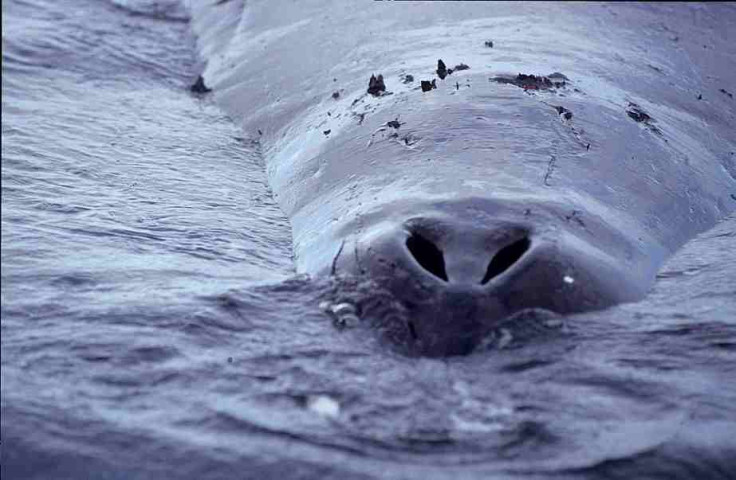Bowhead Whales Compose Jazz Style Songs To Woo Partners, Study Finds

Bowhead whales, predominantly Arctic species, can compose a vast repertoire of song during their breeding season in order to woo partners, a study conducted by the University of Washington revealed. The study published late Tuesday in Biology Letters, a journal of the United Kingdom's Royal Society, analyzed audio recordings gathered under the icy waters of east Greenland.
The bowhead, which has the largest mouth among living animals, sing intricate and variable songs during the blackness of the 24-hour polar night. Study professor Kate Stafford, who is an oceanographer at the University of Washington, compared bowhead whales to jazz musicians.
"If humpback whale song is like classical music, bowheads are jazz," Stafford said. “It’s hard to put into words... They shriek. They moan. They cry and they rattle and they whistle and they hum.”
"The sound is more freeform. And when we looked through four winters of acoustic data, not only were there never any song types repeated between years, but each season had a new set of songs," Stafford added.
Scientists conducted the study by using hydrophones — underwater microphones — to record the whales during breeding seasons over several years. The range of vocalizations sometimes repeated over a period of months. However, the vocals that followed specific patterns never returned in subsequent years.
A total of 184 specific songs, or musical phrases were identified from 2010 to 2014.
“We were hoping when we put the hydrophone out we might hear a few sounds," Stafford, who first detected bowhead whales singing off Greenland in 2007, said. “When we heard, it was astonishing. Bowhead whales were singing loudly, 24 hours a day, from November until April. And they were singing many, many different songs.”
Humpback whales are the only other whales that sing elaborate songs. They are widely studied in their breeding grounds off Hawaii and Mexico.
"It was thought that bowhead whales did the same thing, based on limited data from springtime," Stafford said. "But those 2008 recordings were the first hint, and now this data confirms that bowhead whale songs are completely different from the humpbacks'."
Stafford added: “For marine mammals, acoustics is how they do everything. Humans are mostly visual animals, but marine mammals live in a three-dimensional habitat where sound and acoustic information is how they navigate, how they find food, how they communicate.”
Scientists believe more research is required to further understand the purpose for the whales’ songs and whether both sexes vocalize, or only the males sing, as is the case of humpbacks.
“Why are they changing their songs so much? In terms of behavioral ecology, it is this great mystery,” Stafford said. “Bowhead whales do this behavior in the winter, during 24-hour darkness of the polar winter, in 95 to 100 per cent sea ice cover. So this is not something that is easy to figure out.
“We would never have known about this without new acoustic monitoring technology,” she added.
© Copyright IBTimes 2025. All rights reserved.





















